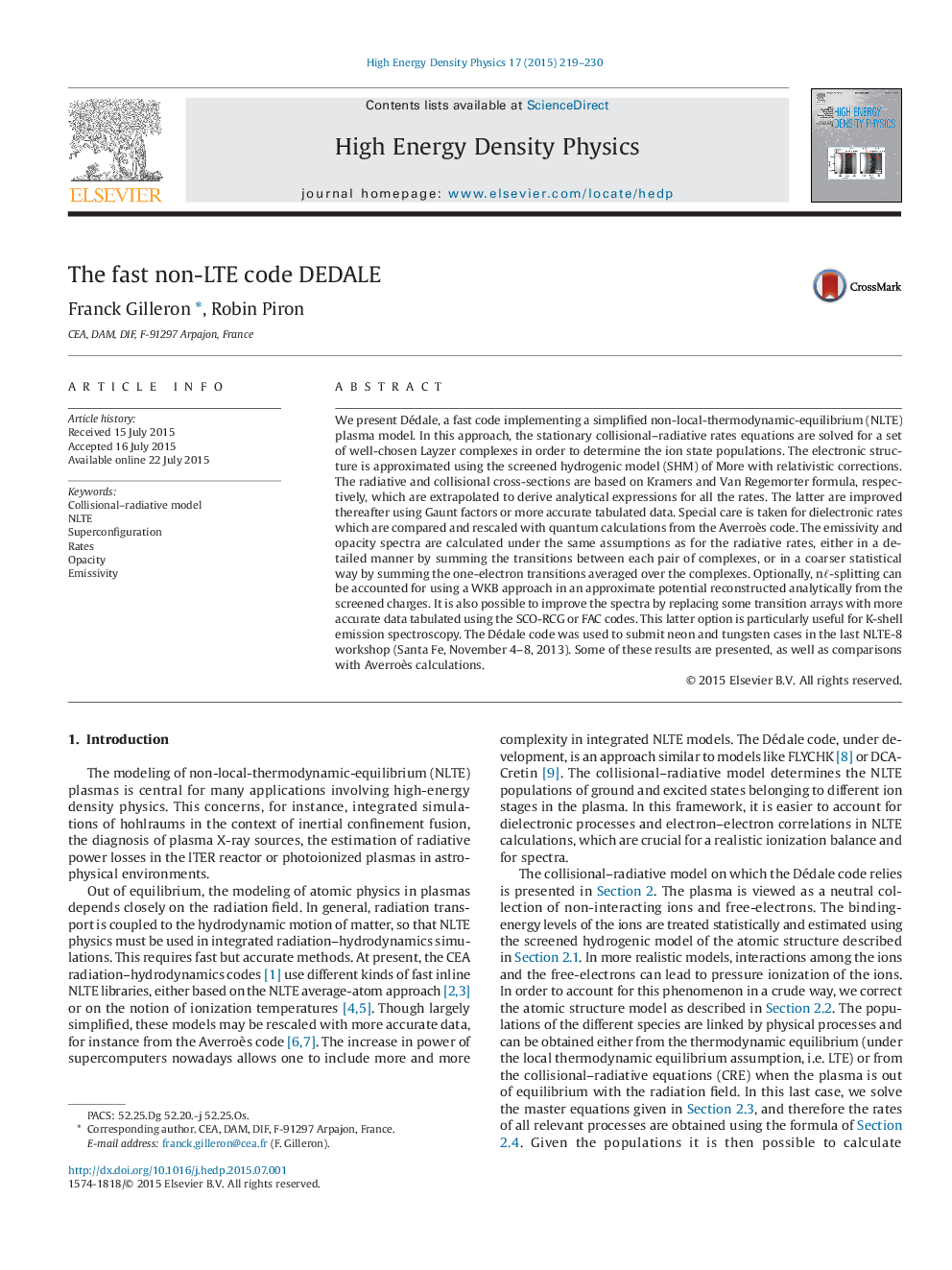| Article ID | Journal | Published Year | Pages | File Type |
|---|---|---|---|---|
| 1772367 | High Energy Density Physics | 2015 | 12 Pages |
Abstract
We present Dédale, a fast code implementing a simplified non-local-thermodynamic-equilibrium (NLTE) plasma model. In this approach, the stationary collisional-radiative rates equations are solved for a set of well-chosen Layzer complexes in order to determine the ion state populations. The electronic structure is approximated using the screened hydrogenic model (SHM) of More with relativistic corrections. The radiative and collisional cross-sections are based on Kramers and Van Regemorter formula, respectively, which are extrapolated to derive analytical expressions for all the rates. The latter are improved thereafter using Gaunt factors or more accurate tabulated data. Special care is taken for dielectronic rates which are compared and rescaled with quantum calculations from the Averroès code. The emissivity and opacity spectra are calculated under the same assumptions as for the radiative rates, either in a detailed manner by summing the transitions between each pair of complexes, or in a coarser statistical way by summing the one-electron transitions averaged over the complexes. Optionally, nâ-splitting can be accounted for using a WKB approach in an approximate potential reconstructed analytically from the screened charges. It is also possible to improve the spectra by replacing some transition arrays with more accurate data tabulated using the SCO-RCG or FAC codes. This latter option is particularly useful for K-shell emission spectroscopy. The Dédale code was used to submit neon and tungsten cases in the last NLTE-8 workshop (Santa Fe, November 4-8, 2013). Some of these results are presented, as well as comparisons with Averroès calculations.
Related Topics
Physical Sciences and Engineering
Physics and Astronomy
Astronomy and Astrophysics
Authors
Franck Gilleron, Robin Piron,
